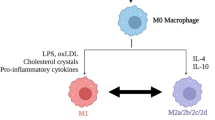Abstract
Prior studies have reported that metallothionein I/II (MT) promote regenerative axonal sprouting and neurite elongation of a variety of central nervous system neurons after injury. In this study, we evaluated whether MT is capable of modulating regenerative axon outgrowth of neurons from the peripheral nervous system. The effect of MT was firstly investigated in dorsal root ganglion (DRG) explants, where axons were scratch-injured in the presence or absence of exogenous MT. The application of MT led to a significant increase in regenerative sprouting of neurons 16 h after injury. We show that the pro-regenerative effect of MT involves an interaction with the low-density lipoprotein receptor megalin, which could be blocked using the competitive antagonist RAP. Pre-treatment with the mitogen-activated protein kinase (MAPK) inhibitor PD98059 also completely abrogated the effect of exogenous MT in promoting axonal outgrowth. Interestingly, we only observed megalin expression in neuronal soma and not axons in the DRG explants. To investigate this matter, an in vitro injury model was established using Campenot chambers, which allowed the application of MT selectively into either the axonal or cell body compartments after scratch injury was performed to axons. At 16 h after injury, regenerating axons were significantly longer only when exogenous MT was applied solely to the soma compartment, in accordance with the localized expression of megalin in neuronal cell bodies. This study provides a clear indication that MT promotes axonal regeneration of DRG neurons, via a megalin- and MAPK-dependent mechanism.





Similar content being viewed by others
References
Ambjorn M, Asmussen JW, Lindstam M, Gotfryd K, Jacobsen C, Kiselyov VV, Moestrup SK, Penkowa M, Bock E, Berezin V (2008) Metallothionein and a peptide modeled after metallothionein, EmtinB, induce neuronal differentiation and survival through binding to receptors of the low-density lipoprotein receptor family. J Neurochem 104:21–37
Asmussen JW, Von Sperling ML, Penkowa M (2009) Intraneuronal signaling pathways of metallothionein. J Neurosci Res 87:2926–2936
Chung RS, Vickers JC, Chuah MI, West AK (2003) Metallothionein-IIA promotes initial neurite elongation and post-injury reactive neurite growth and facilitates healing after focal cortical brain injury. J Neurosci 23:3336–3342
Chung RS, Penkowa M, Dittmann J, King CE, Bartlett C, Asmussen JW, Hidalgo J, Carrasco J, Leung YKJ, Walker AK, Fung SJ, Dunlop SA, Fitzgerald M, Beazley LD, Chuah MI, Vickers JC, West AK (2008) Redefining the role of metallothionein within the injured brain: extracellular metallothioneins play an important role in the astrocyte-neuron response to injury. J Biol Chem 283:15349–15358
Coyle P, Philcox JC, Carey LC, Rofe AM (2002) Metallothionein: the multipurpose protein. Cell Mol Life Sci 59:627–647
Fitzgerald M, Nairn P, Bartlett CA, Chung RS, West AK, Beazley LD (2007) Metallothionein-IIA promotes neurite growth via the megalin receptor. Exp Brain Res 183:171–180
Fleming CE, Milhazes Mar F, Franquinho F, Saraiva MJ, Sousa MM (2009) Transthyretin internalization by sensory neurons is megalin mediated and necessary for its neuritogenic activity. J Neurosci 29:3220–3232
Guertin AD, Zhang DP, Mak KS, Alberta JA, Kim HA (2005) Microanatomy of axon/glial signaling during Wallerian degeneration. J Neurosci 25:3478–3487
Hidalgo J, Aschner M, Zatta P, Vasak M (2001) Roles of the metallothionein family of proteins in the central nervous system. Brain Res Bull 55:133–145
Kozyraki R, Gofflot F (2007) Multiligand endocytosis and congenital defects: roles of cubilin, megalin and amnionless. Curr Pharm Des 13:3038–3046
Miles AT, Hawksworth GM, Beattie JH, Rodilla V (2000) Induction, regulation, degradation, and biological significance of mammalian metallothionein. Crit Rev Biochem Mol Biol 35:35–70
Penkowa M, Carrasco J, Giralt M, Moos T, Hidalgo J (1999) CNS wound healing is severely depressed in metallothionein I- and II- deficient mice. J Neurosci 19:2535–2545
Qiu Z, Hyman BT, Rebeck GW (2004) Apolipoprotein E receptors mediate neurite outgrowth through activation of P44/42 mitogen-activated protein kinase in primary neurons. J Biol Chem 279:34948–34956
van Lookeren Campagne M, Thibodeaux H, van Bruggen N, Cairns B, Gerlai R, Palmer JT, Williams SP, Lowe DG (1999) Evidence for a protective role of metallothionein-1 in focal cerebral ischemia. PNAS 96:12870–12875
Acknowledgments
This research was supported by research grants from the Australian Research Council (DP0984673), the National Health and Medical Research Council of Australia (ID#544913), and the Motor Accident and Insurance Board of Tasmania. JYKL also received a travel fellowship from the Australian Academy of Sciences to visit the NIH (USA) to undertake some of the experiments reported in this study.
Author information
Authors and Affiliations
Corresponding author
Rights and permissions
About this article
Cite this article
Leung, J.Y.K., Bennett, W.R., Herbert, R.P. et al. Metallothionein promotes regenerative axonal sprouting of dorsal root ganglion neurons after physical axotomy. Cell. Mol. Life Sci. 69, 809–817 (2012). https://doi.org/10.1007/s00018-011-0790-7
Received:
Revised:
Accepted:
Published:
Issue Date:
DOI: https://doi.org/10.1007/s00018-011-0790-7




